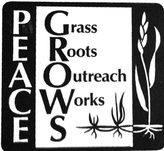Nonviolent national defense has been applied successfully in various international situations with different types of aggressors.
By now we hope you have looked at the glossary of terms under the resources tab. Knowing the definition of something is one step to better communication. This course attempts to explain complex terms.
The following reading from an article by John Looney is key to this session.
|
Here to move slide
| ||
Here are two case studies from World War II
Case studies: |
KING CHRISTIAN PROVES
|
NONVIOLENT HEROISM
|
The Albert Einstein Institution, a nonprofit organization, focuses on advancing freedom through nonviolent action. For decades Gene Sharp, its founder and director, has studied the uses of strategic nonviolent action in conflicts throughout the world. In May 1976, he was interviewed by Fellowship Magazine for the Bicentennial about our "founding fathers" use of nonviolence.
Disregarded History
The power of Nonviolent Action
In North America, the European settlers conducted major campaigns of nonviolent struggle against English controls, particularly for the ten-year period from 1765 to 1775. This was on a scale and significance, which may require when it is more fully researched, a major reinterpretation of American history.
Daniel Dulany, in the pamphlet he wrote on resistance to the Stamp Act in October of 1765, describes certain basic characteristics of political nonviolent struggle. Dulany said, "Instead of moping and whining to excite compassion, in such a situation we ought with spirit and vigor and alacrity to bid defiance to tyranny by exposing its impotence, by making it as contemptible as it would be detestable.”
Daniel Dulany, in the pamphlet he wrote on resistance to the Stamp Act in October of 1765, describes certain basic characteristics of political nonviolent struggle. Dulany said, "Instead of moping and whining to excite compassion, in such a situation we ought with spirit and vigor and alacrity to bid defiance to tyranny by exposing its impotence, by making it as contemptible as it would be detestable.”
George Washington, Nonviolent Strategist
Did you ever think of George Washington as a nonviolent strategist? During this Stamp Act struggle, courts were required to use stamps on official documents. The colonists had decided not to use the stamps. So the question became: “Do the courts remain open without using the stamps, or do the courts close? This was in the context of colonists conducting a massive campaign to refuse to pay debts they owed to the English merchants from whom the colonial merchants had purchased their products on credit. Walpole regarded this as the most effective weapon, which the colonists wielded. So George Washington advised that they should close down the courts, of course. Obeying the law was impossible. You close the courts, Washington reasoned, because if you close the courts, the courts cannot be used in an effort to collect the money, which the colonists were refusing to pay to the English merchants. Therefore, the English merchants would put pressure on their government to repeal the Stamp Act. Very sophisticated nonviolent strategy, calculating effects and counter-effects of specific types of noncooperation.
|
Thomas Jefferson, Advocate of Fasting
Did you know that Thomas Jefferson, with his colleagues, introduced fasting in the colonial struggle? When the spirit of the resistance was weakening at certain points and people were getting bored, he and his friends (who were known rather as playboys, always going out and dancing) got the very respected and staid chaplain of the Virginia House of Burgesses to propose as his own idea a day of fasting and prayer-for political resistance. It was passed by the House of Burgesses and all of Virginia had a day of fasting and prayer-for political resistance. It wasn’t Gandhi who introduced fasting as a political weapon at all.
Later during 1765, Governor Bernard of Massachusetts Bay said: “At this time I have no real authority in this place.” And Lieutenant Governor Thomas Hutchinson of Massachusetts Bay said: “in the capital towns of several of the colonies and of this in particular, the authority is in the populace. No law can he carried into execution against their minds.” There were cases-significant cases-of the burning of buildings and destruction of property during the Stamp Act resistance. Men who had accepted appointments as stamp distributors were threatened with physical attack and even death and run out of town. But not one person was killed. |
Dr. Sharp, Research Fellow of Harvard University’s Program for Science and International Affairs, is the author of THE POLITICS OF NONVIOLENT ACTION (Porter Sargent), a massive study of the nature of nonviolent struggle as a social and political technique.
Other books by Dr. Sharp include SOCIAL POWER AND POLITICAL FREEDOM, which outlines 20 steps for developing and evaluating nonviolent alternatives and GANDHI AS A POLITICAL STRATEGIST. The latter two are available from Porter Sargent, l 1 Beacon Street, Boston, MA 02108.
This article was written by Gene Sharp. Excerpted from an essay by Dr. Sharp in Fellowship (May 1976) by Susan D. Hadley, Nyack, NY.
Other books by Dr. Sharp include SOCIAL POWER AND POLITICAL FREEDOM, which outlines 20 steps for developing and evaluating nonviolent alternatives and GANDHI AS A POLITICAL STRATEGIST. The latter two are available from Porter Sargent, l 1 Beacon Street, Boston, MA 02108.
This article was written by Gene Sharp. Excerpted from an essay by Dr. Sharp in Fellowship (May 1976) by Susan D. Hadley, Nyack, NY.
| Full Article |
Next are two videos, each with an expert in strategic nonviolence.
|
Peter Newman - Violent vs. Nonviolent Resistance
|
Gene Sharp: How to carry out a revolution
|
The following are headings and subheadings from a list of 198 nonviolent actions
Far too often people struggling for democratic rights and justice are not aware of the full range of methods of nonviolent action. Wise strategy, attention to the dynamics of nonviolent struggle and careful selection of methods can increase a group's chances of success. Gene Sharp researched and catalogued these 198 methods and provided a rich selection of historical examples in his seminal work, The politics of Nonviolent Action (3 Vols.) Boston: Porter Sargent, 1973 |
Here to move slide
|
Review and Reflect
Major Point to Remember:
Nonviolent national defense has been applied successfully in various international situations with different types of aggressors.
To Reflect: Optional Activities
Materials located on the "Extra" page for applications #1 & #2
#1: Analyze at least two Case Studies: 15A, 15B, 15C, 15D
#2: Movie Assignment: View "How to Start a Revolution" and answer the corresponding questions
#3: Application:
In this session about nonviolent national defense, we have referred to the Albert Einstein Institute (www.aeinstein.org). If you have not examined their homepage you might find it interesting in its history and available reference materials.
Near the bottom of our “About Us” page you will find download of our Index of Organizations, well over 100 listed. These organizations have websites about community, national and global issues. Knowing there are groups committing time and talent to alternative approaches in dealing with problems can give us hope.
Joining a group of your choice is taking action. Tell us about your decision on our Discussion Forum.
#2: Movie Assignment: View "How to Start a Revolution" and answer the corresponding questions
#3: Application:
In this session about nonviolent national defense, we have referred to the Albert Einstein Institute (www.aeinstein.org). If you have not examined their homepage you might find it interesting in its history and available reference materials.
Near the bottom of our “About Us” page you will find download of our Index of Organizations, well over 100 listed. These organizations have websites about community, national and global issues. Knowing there are groups committing time and talent to alternative approaches in dealing with problems can give us hope.
Joining a group of your choice is taking action. Tell us about your decision on our Discussion Forum.

